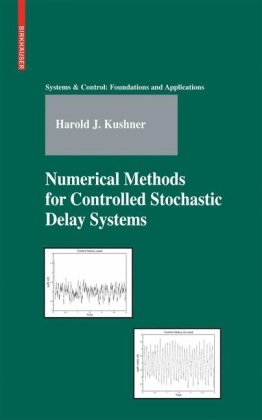

Most ebook files are in PDF format, so you can easily read them using various software such as Foxit Reader or directly on the Google Chrome browser.
Some ebook files are released by publishers in other formats such as .awz, .mobi, .epub, .fb2, etc. You may need to install specific software to read these formats on mobile/PC, such as Calibre.
Please read the tutorial at this link: https://ebookbell.com/faq
We offer FREE conversion to the popular formats you request; however, this may take some time. Therefore, right after payment, please email us, and we will try to provide the service as quickly as possible.
For some exceptional file formats or broken links (if any), please refrain from opening any disputes. Instead, email us first, and we will try to assist within a maximum of 6 hours.
EbookBell Team

0.0
0 reviewsThe Markov chain approximation methods are widely used for the numerical solution of nonlinear stochastic control problems in continuous time. This book extends the methods to stochastic systems with delays. Because such problems are infinite-dimensional, many new issues arise in getting good numerical approximations and in the convergence proofs. Useful forms of numerical algorithms and system approximations are developed in this work, and the convergence proofs are given. All of the usual cost functions are treated as well as singular and impulsive controls. A major concern is on representations and approximations that use minimal memory.
Features and topics include:
* Surveys properties of the most important stochastic dynamical models, including singular control, and those for diffusion and reflected diffusion models.
* Gives approximations to the dynamical models that simplify the numerical problem, but have only small effects on the behavior.
* Develops an ergodic theory for reflected diffusions with delays, as well as model simplifications useful for numerical approximations for average cost per unit time problems.
* Provides numerical algorithms for models with delays in the path, or path and control, with reduced memory requirements.
* Develops transformations of the problem that yield more efficient approximations when the control, driving Wiener process, and/or reflection processes might be delayed, as well as the path.
* Presents examples with applications to control and modern communications systems.
The book is the first on the subject and will be of interest to all those who work with stochastic delay equations and whose main interest is in either the use of the algorithms or the underlying mathematics. An excellent resource for graduate students, researchers, and practitioners, the work may be used as a graduate-level textbook for a special topics course or seminar on numerical methods in stochastic control.